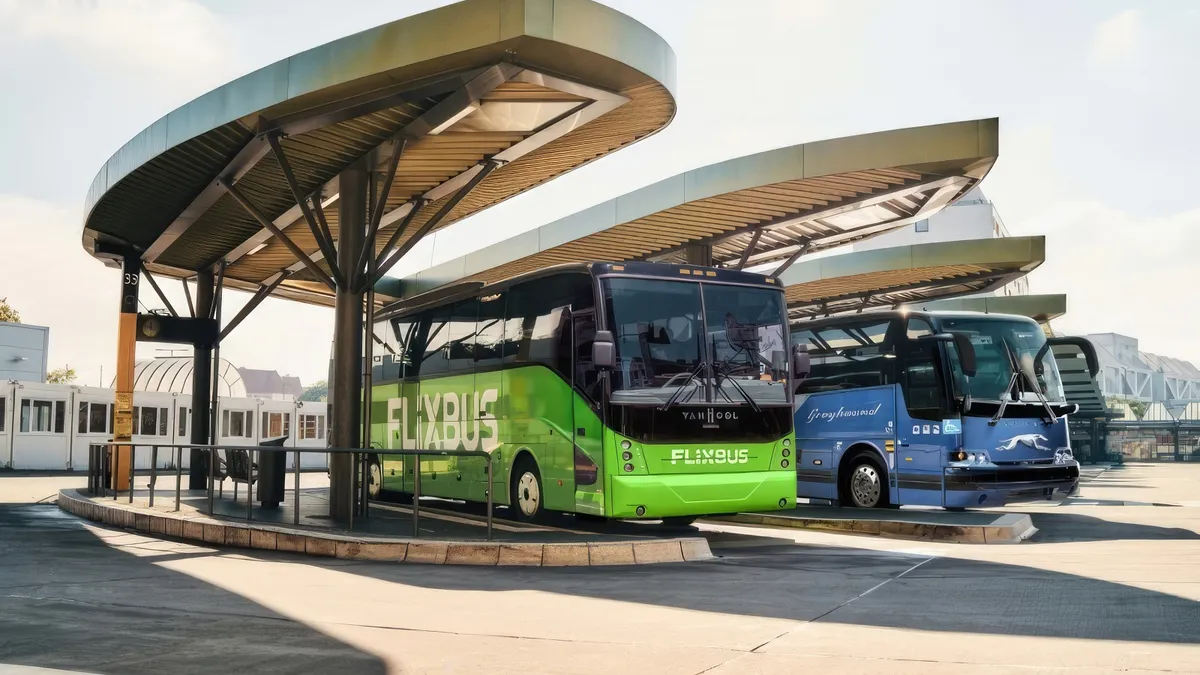Dive Brief:
- The closure of many former Greyhound bus stations added to the travel hardships faced by disabled and low-income travelers, according to the Chaddick Institute for Metropolitan Development’s 2024 Intercity Bus Review, published today. “In most cases, municipal governments did little, and in some instances were openly hostile, to efforts to find a new location” for an intercity bus station, it states.
- However, the report notes that more state-supported bus networks, along with federal funding through the Rural Transit Assistance Program, are changing government attitudes toward intercity bus travel.
- “Public policies will gradually swing in the industry’s favor as the growing hardships facing disabled and lower-income travelers on long-distance trips and the success of state-supported bus systems reduce the indifference toward bus travel among many public agencies,” it states.
Dive Insight:
Few options for U.S. intercity travel exist for those who don’t have a car, can’t afford or can’t be accommodated by commercial airlines or travel outside Amtrak’s 500-plus destinations. That’s where the nation’s intercity and rural bus lines come in. A recent Greyhound survey found that its riders come from a wide range of income groups, including many moderate- and lower-income households, the report states.
“We're seeing public agencies acknowledge the need to do more” to help under-resourced individuals access intercity bus options, Joseph Schwieterman, director of the Chaddick Institute at DePaul University and a co-author of the report, said in an interview.
Schwieterman gave examples of how states have established bus networks to meet residents’ transit needs. The Virginia Department of Rail and Public Transportation operates four intercity bus routes through Virginia Breeze Bus Lines, which began in 2017 as a federally funded pilot service with the goal of providing accessible and affordable transportation to underserved communities in Virginia.
The state of Washington uses Federal Transit Administration funding to contract with private operators to connect rural communities to major transportation hubs and urban centers. It typically provides more than 30,000 trips a year, serving many rural areas of the state. The Colorado Department of Transportation’s Bustang service links local transit systems along Interstate 25 in the Front Range and Interstate 70 in the mountain corridors.
These state-supported bus systems are “a really good value proposition for governments because [their] subsidy requirements are so low compared to traditional public transit,” Schwieterman said.
Amtrak now offers bookings on its website for some of these state-supported bus systems, Schwieterman said. On a route that may just have one or two trains a day, buses help fill the schedule and increase convenience for travelers, he explained, citing routes in North Carolina and Oregon as examples.
The nation’s passenger railroad also collaborates with private intercity bus operators. Last August, Amtrak launched its first electric intercity bus between Seattle and Bellingham, Washington, contracting with MTRWestern to operate the service.
FlixBus, which owns Greyhound, is the largest intercity bus operator by market share in the U.S., Schwieterman said. Trailways, another large operator, entered a new partnership with FlixBus and Greyhound on Jan. 10, enabling customers to book trips across all three brands on each other’s websites. Megabus also expanded its route map last year, making it easier for bus riders to plan their trips.
Schwieterman estimated total intercity bus ridership at about 50 million people in 2023, almost 90% of pre-pandemic levels. The report predicts that ridership will fully recover by 2026. In comparison, Amtrak recorded 28.6 million riders in fiscal year 2023, 88% of its pre-pandemic ridership and 57% of the intercity bus ridership estimate. While more than 90 cities and states are vying for new passenger train routes under 750 miles, “compared to train service expansion, [bus expansion] can be lightning fast,” he said.












